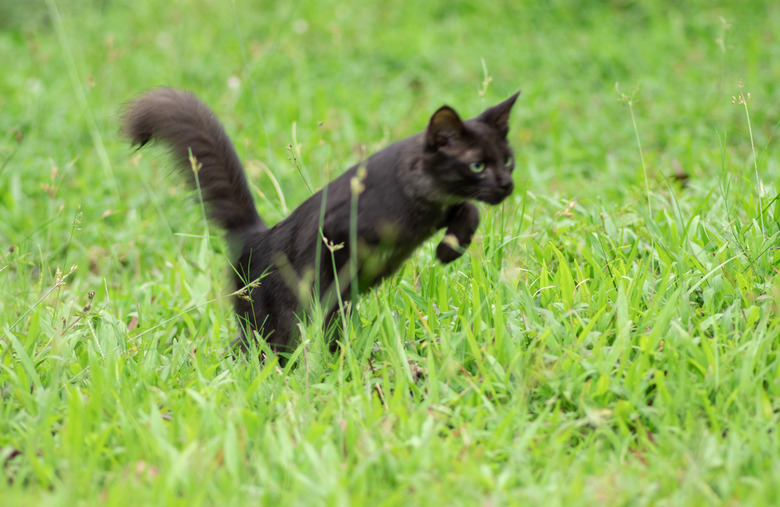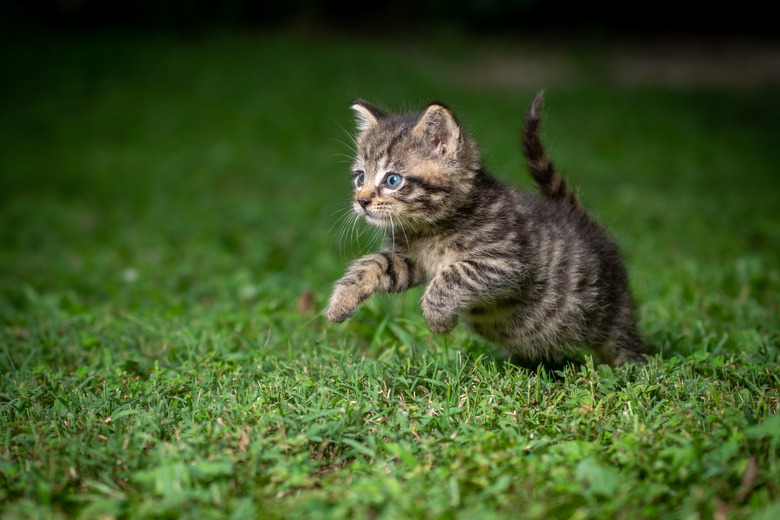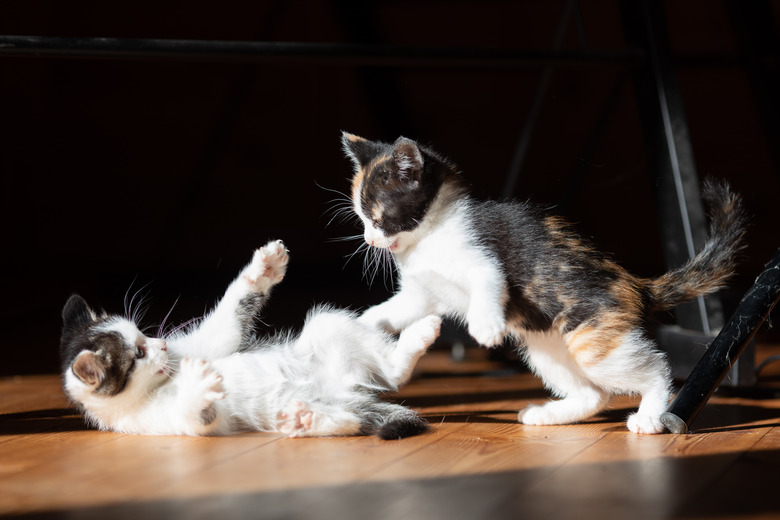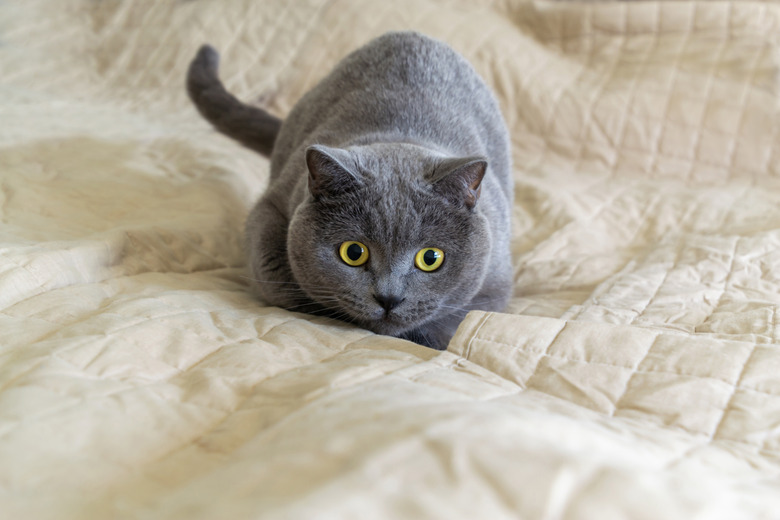Why Do Cats Wiggle Their Butt Before They Pounce?
Butt wiggling — it's undeniably one of the cutest things our cats do. Watching them gear up to pounce and twitch their butt will make anyone giggle. But why do cats wiggle before they pounce? Experts aren't completely sure, but some interesting theories have been developed to explain this behavior.
Why do cats pounce?
Why do cats pounce?
Pouncing is an instinctual behavior that aided the hunting abilities of domestic cat ancestors. While some big cats, such as the cheetah, use their speed and endurance to catch prey, other species are ambush predators who rely on the element of surprise. Once an ambush predator locates his prey, he will remain still while he waits for the perfect moment to strike. In big cats, like the mountain lion, a pounce is accompanied by a fatal bite to the back of the neck.
Domestic cats have retained their instinct to pounce, though most don't need to rely on their hunting skills to survive. You've probably noticed your cat displaying his pouncing skills when going after a spider, but cats will also pounce while playing.
Why do cats wiggle their tail?
Why do cats wiggle their tail?
Cats don't just twitch their hindquarters before they pounce; there's often some tail-wiggling action that goes along with this. So, why do cats wiggle their tail?
A cat's tail is an important communication tool. How quickly or slowly she moves her tail and what position the tail is in can say a lot about a cat's mood. Some common cat tail movements and what they mean include:
- Tail upright, straight, or slightly curled at the tip: happy, confident
- Tail straight down: agitated or uncomfortable
- Tail curved beneath the body: nervous and/or submissive
- Tail puffed: agitated, scared, angry
- Tail whipping back and forth: scared, angry
- Tail swaying slowly: focused (often seen when hunting or playing)
A cat's tail also plays a big role in maintaining balance and speed. Cats will use their tail as a counterbalance when navigating narrow or uneven surfaces. When running, the tail helps to keep their legs and hips aligned and to turn tight corners without losing momentum.
Why do cats wiggle their butt before pouncing?
Why do cats wiggle their butt before pouncing?
As with many animal behaviors, we don't know the reasoning behind the cat butt wiggle with absolute certainty. The wiggle dance is most often seen in house cats but has occasionally been observed in big cats, like mountain lions and tigers.
Science doesn't have a clear explanation for this behavior. The cat wiggle may be an aerobic warmup for a successful pounce, helping to stretch their muscles and prepare them to release the energy that propels them forward. The wiggle may also give added friction and help a cat maintain solid footing before take-off. There may a neurological component to this little dance as well. Cats may wiggle their butt to prepare their vision, muscles, and proprioception (the awareness of their position and movement) for the rapid-fire neural commands that happen before and during a pounce.
Though there have been no formal studies on butt wiggling itself, a study from the University of California at Santa Cruz recorded the energetics of mountain lions, who are famous for their pouncing ability, to study how and why they pounce. Both wild cats and domestic cats prove to be tricky subjects on whom to conduct studies. Wild cats are elusive and shy, and it can be difficult to observe specific behaviors enough to analyze them, while domestic cats are not exactly known for their people-pleasing mindset. While dogs can be desensitized to research environments and trained to perform certain behaviors in order to collect data, it's not as easy with cats, so formal studies on cat behavior are very limited.



